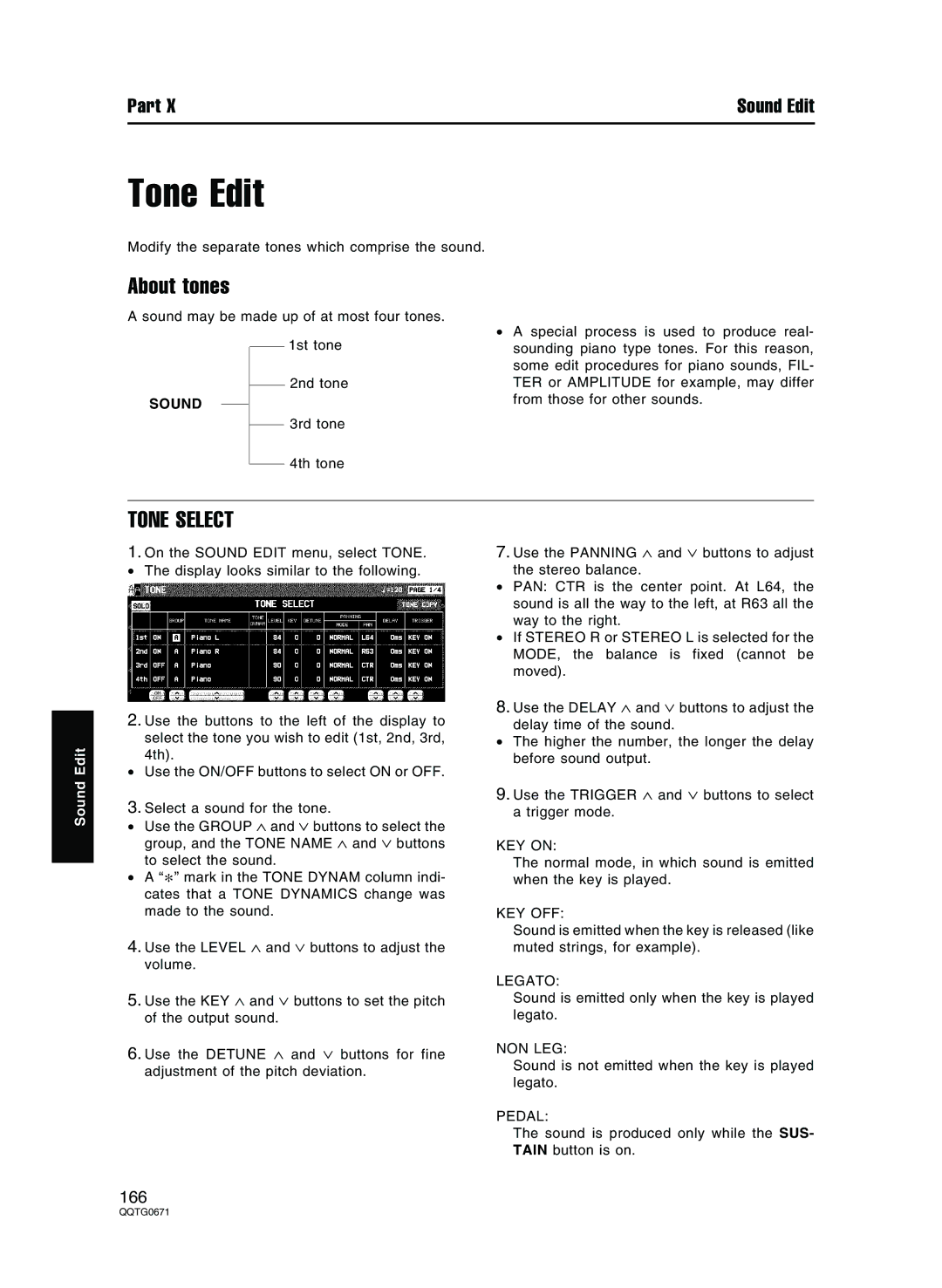
Part X | Sound Edit |
Tone Edit
Modify the separate tones which comprise the sound.
About tones
A sound may be made up of at most four tones.
1st tone
2nd tone
SOUND
3rd tone
•A special process is used to produce real- sounding piano type tones. For this reason, some edit procedures for piano sounds, FIL- TER or AMPLITUDE for example, may differ from those for other sounds.
4th tone
Sound Edit
TONE SELECT
1.On the SOUND EDIT menu, select TONE.
• The display looks similar to the following.
2.Use the buttons to the left of the display to select the tone you wish to edit (1st, 2nd, 3rd, 4th).
•Use the ON/OFF buttons to select ON or OFF.
3.Select a sound for the tone.
•Use the GROUP ∧ and ∨ buttons to select the group, and the TONE NAME ∧ and ∨ buttons to select the sound.
•A “*” mark in the TONE DYNAM column indi- cates that a TONE DYNAMICS change was made to the sound.
4.Use the LEVEL ∧ and ∨ buttons to adjust the volume.
5.Use the KEY ∧ and ∨ buttons to set the pitch of the output sound.
6.Use the DETUNE ∧ and ∨ buttons for fine adjustment of the pitch deviation.
166
7.Use the PANNING ∧ and ∨ buttons to adjust the stereo balance.
•PAN: CTR is the center point. At L64, the sound is all the way to the left, at R63 all the way to the right.
•If STEREO R or STEREO L is selected for the MODE, the balance is fixed (cannot be moved).
8.Use the DELAY ∧ and ∨ buttons to adjust the delay time of the sound.
•The higher the number, the longer the delay before sound output.
9.Use the TRIGGER ∧ and ∨ buttons to select a trigger mode.
KEY ON:
The normal mode, in which sound is emitted when the key is played.
KEY OFF:
Sound is emitted when the key is released (like muted strings, for example).
LEGATO:
Sound is emitted only when the key is played legato.
NON LEG:
Sound is not emitted when the key is played legato.
PEDAL:
The sound is produced only while the SUS- TAIN button is on.
